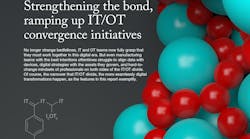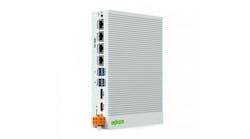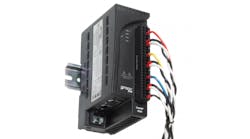How improvements in vision technology drive social progress in the digital era
Machine-vision capabilities are expanding at an astonishing rate. Combined with advances in robotics, control technology, artificial intelligence and the IIoT, industrial vision is poised to have a major impact.
In fact, the fourth industrial revolution is expected to have a much wider effect on society than the previous revolutions. It goes beyond the areas that have been traditionally thought of as “industrial” to bring us concepts like smart homes and smart cities.
So what’s the latest that machine vision can do?
As an integral component of systems that can automatically visualize, control and make decisions about all aspects of production, machine vision has a lot to offer. Currently we're seeing major advances in image sensors, autofocus capabilities and lighting configurations that can flexibly change illumination direction and color to accommodate different product characteristics.
Some vision systems on the market today include a multi-core CPU that facilitates extremely fastest image processing and high-speed image-data compression that makes it possible to store large amounts of traceability data without slowing down production. In addition, today’s cameras tend to employ Graphical User Interfaces for programming, which makes it easier for companies to invest in the technology while keeping engineering time to a minimum.
Let’s take a look at a few ways in which the awe-inspiring power of today’s machine-vision technologies can move industry (and society as a whole) in a positive direction.
Helping to ensure a future of safe transportation
Automobiles are getting more complex, and it’s essential that manufacturers maintain their commitment to the strict quality requirements that ensure the safety of everyone on the road. As it turns out, machine vision has the potential to not just to maintain the current degree of quality control, but to actually elevate it.
Smart cameras and multi-camera vision systems leverage increasingly powerful image-processing algorithms to detect the tiniest of defects that even a human inspector might not catch. Dents, scratches and minuscule variations in color all signal an alert during inspections, dramatically reducing the number of faulty vehicles making it to market.
Saving lives through quick and accurate diagnostics
Machine vision performs many of the necessary functions for automating clinical laboratory-diagnostic tests, including detecting cap color, capturing patient data from the attached barcode, and verifying that specimen tubes are sufficiently full. The automation of routine medical testing is essential for improving patient care, shortening emergency-room times and bolstering patient and clinician satisfaction.
With its broad applications for quality inspections and data capture, machine vision has the capability to significantly improve safety in transportation, medicine and many other industries. During this fourth industrial revolution, we can expect to see a major reduction in preventable accidents wherever machine vision has been implemented.
Fernando Callejon is product manager—vision with Omron Automation Americas



